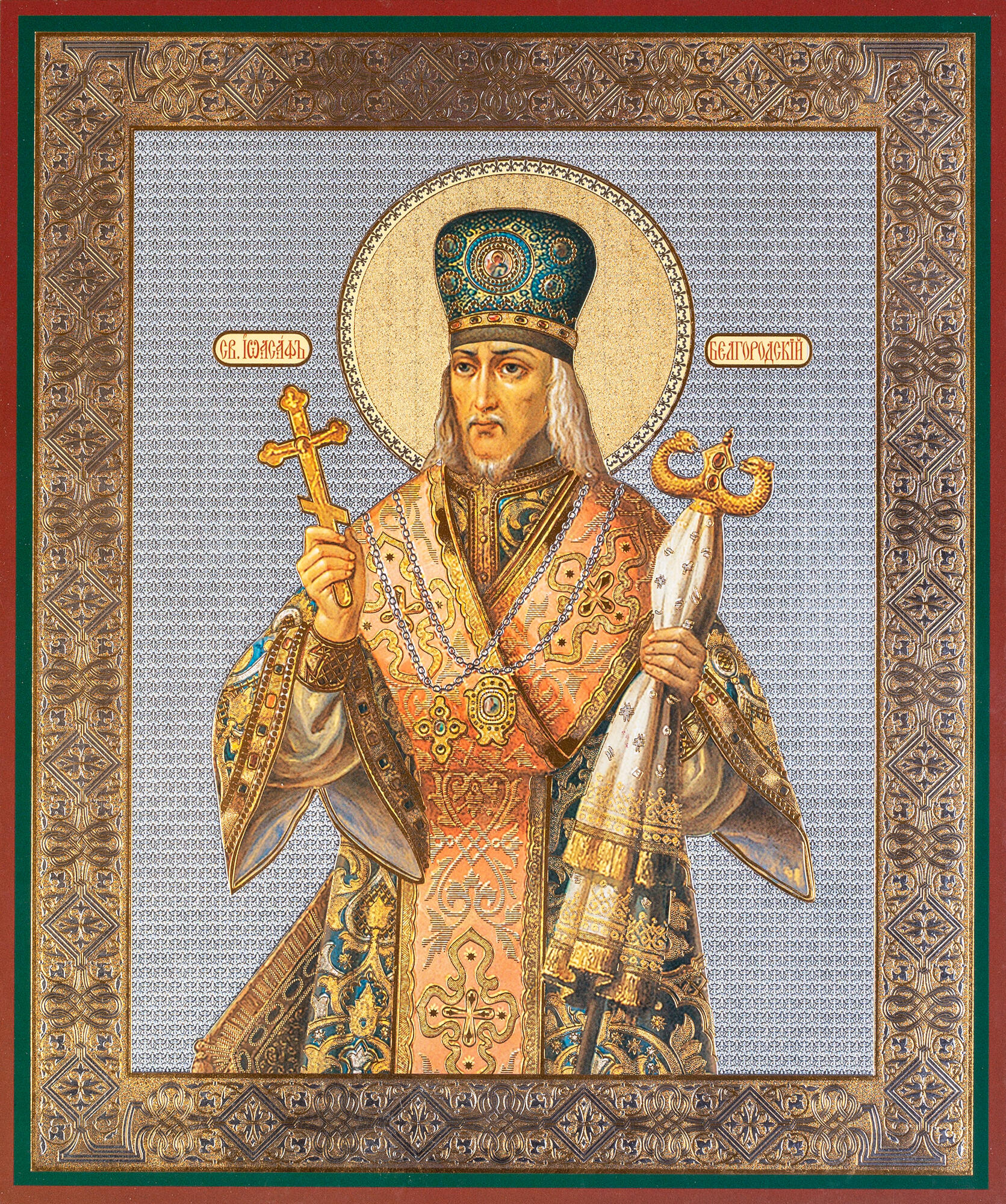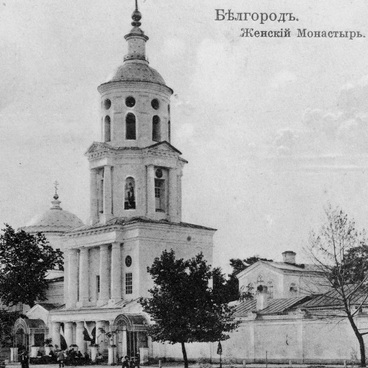Portrait images of Bishop Joasaph began to be revered as icons long before he was canonized. The official canonical image of the saint, with precise instructions for icon painters, appeared in 1911. A portrait painted in the late 1860s was adopted as an iconographic basis: long, slightly curly hair, a short beard, and a wise and peaceful look of dark eyes. There are two main iconographic variants: in one, Saint Joasaph is represented in the regular robes of a bishop, and in the other — in festive attire. In his left hand, he holds a bishop’s baton, and in his right — a cross (in some icons, the saint’s fingers are folded in a gesture of blessing).
The future Bishop of Belgorod and Oboyan Joasaph (Gorlenko) graduated from the Kyiv-Mohyla Theological Academy and was well-educated. Through his efforts, the churches under his care became true centers of spirituality and enlightenment among the parishioners; he contributed to the opening of parochial schools and the eradication of “all kinds of superstitions and pagan rites and customs among the people.”
As a “strict zealot of morality” among the laity, clergy and monastics, Bishop Joasaph inspired his flock both in deed and in word, including writing. His teachings, sermons, and other works are distinguished by a pronounced literary talent.
When still a hieromonk and an examiner of the Kyiv Theological Academy, Joasaph wrote one of his best-known works for the arrival of Bishop Raphael (Zaborovsky). The poetic welcoming address is familiar to readers as the poem “The Battle of the Seven Heavenly Virtues with Seven Deadly Sins”.
In this poem, the future saint warns of deadly sins that lie in wait for a Christian on the path of life and recalls trusting in God and following “heavenly virtues”.
The first edition of the poem is dated 1892. The recent re-edition of the poem was initiated by Andrey Igorevich Papkov, a researcher at the Museum of Local Lore, and the hegumen of the Transfiguration Cathedral; protopriest Oleg Kobets also supported the idea. The poetic translation was made by protopriest Igor Kobelev of the Church of Saint Nicolas and Saint Joasaph.
The future Bishop of Belgorod and Oboyan Joasaph (Gorlenko) graduated from the Kyiv-Mohyla Theological Academy and was well-educated. Through his efforts, the churches under his care became true centers of spirituality and enlightenment among the parishioners; he contributed to the opening of parochial schools and the eradication of “all kinds of superstitions and pagan rites and customs among the people.”
As a “strict zealot of morality” among the laity, clergy and monastics, Bishop Joasaph inspired his flock both in deed and in word, including writing. His teachings, sermons, and other works are distinguished by a pronounced literary talent.
When still a hieromonk and an examiner of the Kyiv Theological Academy, Joasaph wrote one of his best-known works for the arrival of Bishop Raphael (Zaborovsky). The poetic welcoming address is familiar to readers as the poem “The Battle of the Seven Heavenly Virtues with Seven Deadly Sins”.
In this poem, the future saint warns of deadly sins that lie in wait for a Christian on the path of life and recalls trusting in God and following “heavenly virtues”.
The first edition of the poem is dated 1892. The recent re-edition of the poem was initiated by Andrey Igorevich Papkov, a researcher at the Museum of Local Lore, and the hegumen of the Transfiguration Cathedral; protopriest Oleg Kobets also supported the idea. The poetic translation was made by protopriest Igor Kobelev of the Church of Saint Nicolas and Saint Joasaph.



